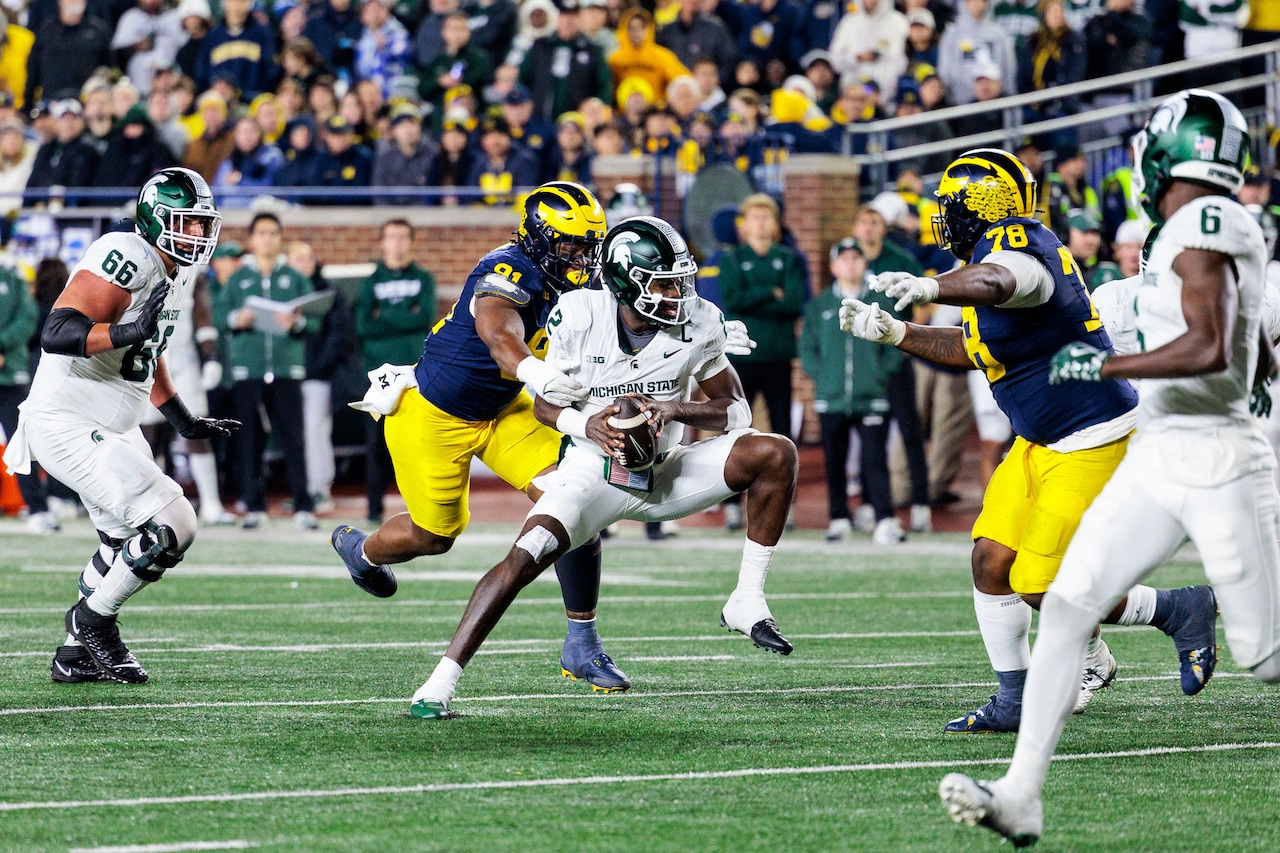Copyright Simple Flying

Sun Country Airlines (NYSE: SNCY) has begun scheduled operations with its first Boeing 737-900ER, a larger, longer-range member of the Boeing 737 Next Generation family. The move is small in terms of overall fleet count, but it is a noteworthy signal sent by the airline to passengers, investors, and competitors. The carrier is going to be testing higher-gauge aircraft on its busiest leisure routes, including services to warm-weather and entertainment markets from its principal hub at Minneapolis-St. Paul International Airport (MSP). Early schedules now show that the jet is concentrated on routes from MSP to cities like Orlando (MCO), Phoenix (PHX), and Las Vegas (LAS). These are all classic Sun Country routes that surge in holiday and winter peaks. The Boeing 737-900ER now enters service as part of a small five-aircraft package that Sun Country acquired in 2023, with deliveries ranging from 2024 to 2026. In other words, this is the first visible proof point of a plan two years in the making, with the airline now looking to upgauge where demand is at its strongest and protect per-seat unit costs. This gives network planners the ability to experiment with more range and payload flexibility during peak periods. Passengers can expect the Boeing 737-900ER to appear mostly where seats are guaranteed to sell and airport slots or turn times make fewer, larger flights more efficient. A Deeper Look At The Sun Country Airlines Fleet Sun Country Airlines today operates a hybrid model, with scheduled leisure flying centered on MSP and a sizable charter business helping generate further cash flow. The carrier operates a separate cargo division flying Boeing 737-800 freighters for Amazon Air. The backbone of the airline's passenger fleet remains the Boeing 737-800, which fits the network's medium-haul, high-density profile and allows for commonality in crews, spare parts, and overall maintenance. The airline's cargo subfleet, which is based on the Boeing 737-800, leverages a very consistent set of airframes that help keep training and engineering simple even across different business lines. Into that picture comes the Boeing 737-900ER, and it shares the same cockpit as the rest of the fleet while adding a capacity stretch that helps the airline further monetize peak demand. This makes the aircraft exceptionally attractive on thick leisure travel flows where Sun Country already enjoys strong brand awareness and schedule primacy from MSP. Because this Boeing 737-900ER originated with Oman Air, its interiors will eventually be transitioned toward the airline's standard configuration over time, providing immediate gauge and range benefits across the board. From a strategic perspective, the fleet now has three useful levers, including many Boeing 737-800s, which it will be using for day-to-day services. It also operates a few Boeing 737-900ER jets that push down unit costs on trunk routes and support shoulder season demand. The cargo aircraft continues to monetize the airline's partnership with Amazon, growing smooth cash flows and improving overall fleet utilization throughout the business cycle. Where Does The Boeing 737-900ER Fit Into The Sun Country Airlines Fleet? The Boeing 737-900ER fills a very specific gap between the airline's fleet of workhorse Boeing 737-800 models. The airline also has a need to continue growing the number of people per departure, especially on a handful of thick markets that have very time-sensitive demand. These are cities that see large amounts of demand from the airline's principal hubs. The stretch to the Boeing 737-900ER adds a few key advantages for the airline. For starters, it offers lower overall costs per seat on full flights, something crucial when fares remain competitive. Overall schedule efficiency is also a key component, since a single Boeing 737-900ER rotation can help grow revenue shares when slot constraints limit the airline from offering multiple Boeing 737-800 frequencies. The airliner also gives the carrier additional range and payload headroom that can help preserve operational resilience. Even on long stages with a full cargo load, the carrier is capable of serving even the farthest-flung destinations. From the standpoint of the customer, the aircraft helps support peak-season availability, with more seats available on the exact flights that travelers want, and it reduces overall spill when holidays compress demand into just a few departure banks. For operations, the aircraft's cockpit commonality with the Boeing 737-800 eases overall pilot scheduling and maintenance ramp-up. Across the board, it is a scalpel that allows the carrier to target high-yielding corridors out of its principal hub. What Are The Routes That This Specific Aircraft Serves? Simple Flying was able to evaluate some scheduling data for Sun Country's Boeing 737-900ER operation, which is concentrated on trunk routes operated exclusively out of the airline's MSP hub. This data was provided by airline industry database Cirium, and the following table highlights services and frequencies for November 2025 by the airframe: These assignments line up nicely with local school breaks (times in which leisure demand typically peaks) and early winter peak travel demand periods, both of which highlight how the aircraft can be effectively used to serve additional demand that can emerge for specific periods of time. Aircraft turns are often tight during this period, meaning the additional capacity of the Boeing 737-900ER can help add much-needed flexibility for the airline. In total, the aircraft will operate around 117 flights this month, servicing more than 20,000 passengers and generating around 29 million available seat miles (ASMs) for the airline. This pattern highlights how the aircraft is valued by the airline, as it monetizes long, leisure-heavy routes that feature strong two-way demand and would benefit significantly from the additional seats that this higher-capacity model would place in the cabin. What Is The Boeing 737-900ER's Strategic Purpose For The Airline? The principal purpose of adding the Boeing 737-900ER to its fleet is to give the airline the ability to upgauge on contested corridors, especially leisure routes where it competes directly with Delta Air Lines, its principal competitor out of its hub at Minneapolis/St. Paul International Airport. Ultra-low-cost carriers also crowd winter routes to cities in Florida and the Southwest, making the Boeing 737-900ER a valuable aircraft for growing and defending market share on highly-contested days and block times. The aircraft also helps the airline continue to improve flight banking flexibility. During the holidays, one larger departure at a prized time can beat two smaller flights at off-peak times, helping improve customer convenience and crew utilization across the board. Because these are ex-Oman Air aircraft that were bought in a pre-announced five-unit acquisition, they represent a capital-light upgauge versus ordering new builds in today's heavily supply-constrained market. Finally, it is important to note that the inclusion of this aircraft in its operations helps the airline futureproof its fleet and some Minneapolis-based missions where bags, golf clubs, and high load factors pressure overall runway performance and block time flexibility. The airline's overall strategy is clear, as it aims to use this jet to add more capacity where it is needed most, keeping costs per seat low when demand spikes and a capacity expansion becomes a necessity. A Deeper Look At The Boeing 737-900ER The Boeing 737-900ER is the largest member of the Boeing 737 Next Generation family, pairing the Boeing 737-800's operating systems and flight deck with optional auxiliary tanks that extend the jet's range impressively. Carriers choose the jet when they need more seats on key routes while keeping the familiar trip costs of the NG family. The aircraft also comes along with the added benefit of some additional range and improved payload margin on transcontinental missions. For pilots, cabin crew, and maintenance teams, the aircraft behaves quite simply as a stretched version of the Boeing 737-800, helping ease the transition from smaller models by preserving parts commonality, a key reason why carriers add a small Boeing 737-900ER subfleet instead of jumping right into a new aircraft type. When it comes to Sun Country Airlines, this ex-Oman Air airframe helps accelerate entry at a time when new-build narrowbodies are hard to source and expensive to finance across the board. At the end of the day, the aircraft is a pragmatic upgauge, with no reinvention required, and the jet is tailor-made for thick leisure routes when full cabins are the norm. All About Efficiency The Sun Country Airlines Boeing 737-900ER is a targeted tool, not any kind of wholesale fleet overhaul. The airline will be deploying this jet where it is most effective and where it can have the largest impact on the carrier's overall financial performance. It has entered service on key leisure routes, exactly the places where it will make a difference. The airline's playbook with the model includes squeezing as much revenue as possible out of each departure while pushing down on overall costs per seat, allowing the airline to gain an edge in otherwise crowded leisure markets. As additional Boeing 737-900ER aircraft are scheduled to follow, the carrier will continue to increase its gauge on core trunk routes without disrupting its Boeing 737-800-led operation that serves as the core of its brand today. The aircraft has entered service and continues to do exactly what it was designed to do. It is a model that is fundamentally designed to add range and capacity over smaller variants. That is the only thing that Sun Country is using the aircraft for, and likely all it will do with the jet.



